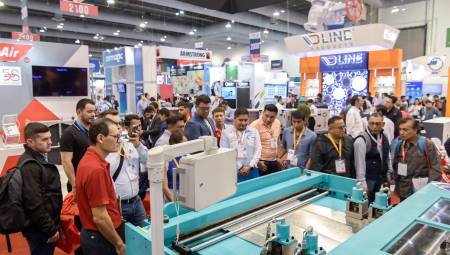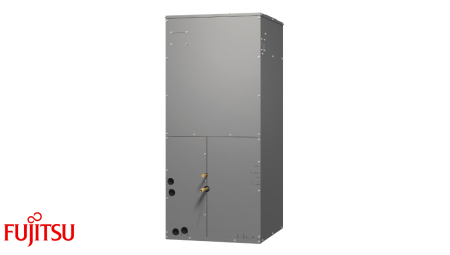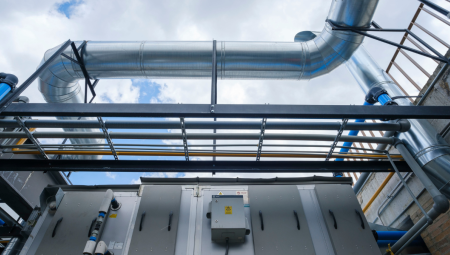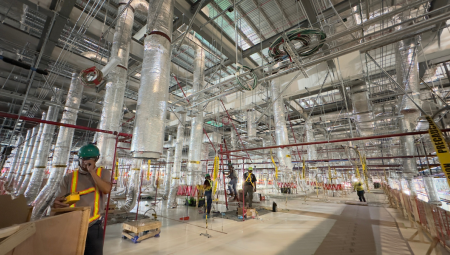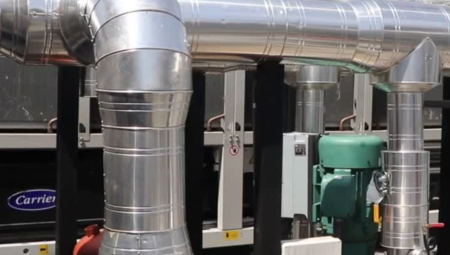This new initiative of the CDT, which comes from the hand of the document "Exterior Thermal Insulation: Design Manual for solutions in buildings", aims mainly to strengthen good construction practices in terms of improving the energy efficiency of homes and their habitability, additionally providing knowledge and guides to improve the quality of life of end users by giving recommendations for the use and maintenance of housing, thus achieving a longer service life of the refurbishment solutions implemented and a more effective insulation.

Introduction
At present, it is essential to reduce energy expenditure, due to the scarcity of energy resources in the world. That is why the field of construction cannot be indifferent to this phenomenon, which is why the greatest number of measures must be taken to mitigate the energy crisis.
Already in 1996 the Ministry of Housing and Urbanism (MINVU) established a Regulatory Program on Thermal Conditioning of Housing. This Program consists of three stages, of which the first two are already in force:
• 1st Stage: Roof insulation.
• 2nd Stage: Insulation of ventilated walls, windows and floors.
• 3rd Stage: Energy certification of buildings.
The objectives that seek to satisfy the two current stages are to minimize energy consumption, use and optimize internal and external gains. And, in the event that heating or cooling an enclosure is required, use non-polluting, efficient and low-cost systems.
The first stage came into force in March 2000 while the second in January 2007, both through modifications to the General Ordinance of Urbanism and Constructions, in article 4.1.10, which establishes thermal insulation requirements depending on the area in which the house is located.
Although the current Thermal Regulations have generated benefits for the homes covered by it, that is, in the case of roofs for homes built since 2000 and for walls, windows and ventilated floors since 2007, there is a large number of homes that do not have an adequate thermal insulation system, because there was no legislation that required them to comply with minimum thermal resistance requirements in the envelope.
At present, there are 74% of homes that are not covered by any thermal requirements, homes built before the year 2000, and 19% that are only covered by the First Stage of the Thermal Regulation, that is, they only have roof insulation, corresponding to homes built between the periods March 2000 and February 2007.
But this large number of homes that are not covered by the Thermal Regulation, either in one or in its two current stages, can improve their thermal insulation
by means of a thermal reconditioning.
Thermal reconditioning seeks to improve the conditions of thermal comfort within a home, through the application of systems, methods and / or materials, which
they can be executed through a minor work. But although the thermal refurbishment seeks to improve mainly the conditions of the houses that are not covered by the Thermal Regulation, the houses that have been built under the latter can also be reconditioned, in order to isolate elements that the current Thermal Regulation does not consider, such as doors, or improve the existing insulation in order to achieve lower energy consumption and an increase in comfort thermal, given that the regulations establish comfort temperatures lower than international standards.
It should be noted that in 2009, the Ministry of Housing and Urban Planning, together with the Country Energy Efficiency Program, implemented a pilot program of housing subsidies for thermal reconditioning focused on homes in vulnerable sectors.
The objective of this subsidy is to encourage families to refurbish thermally to reduce energy expenditure.
This means a great advance in terms of home reconditioning in the country, since it corresponds to the first subsidy program that seeks to encourage thermal conditioning by reducing the value of thermal transmittance (U) for vertical elements; Barriers
steam and/or moisture; interior and exterior cladding, window frames, among others.
This manual will show the possible constructive solutions and / or materialities that allow thermal reconditioning homes that are already built.
The solutions considered in this technical document will have as minimum conditions of thermal reconditioning those indicated in the current Thermal Regulations, that is, the thermal requirements indicated in it will be considered as a basis.
The manual considers solutions for roofs, walls, openings and floors: seeking to offer feasible options for all types of homes, in order to encourage thermal reconditioning at all levels.
In addition, a case study demonstrates the energy-saving benefits of refurbishing a house.
Finally, a spreadsheet of calculation and sizing of the proposed solutions is delivered, of easy use and application: for all types of users.
Previous background
Thermal reconditioning is understood as all those solutions, methods and / or materials that allow to reduce energy consumption, and consequently, increase the thermal comfort of the members of a home.
2.1 Advantages of reconditioning
When thinking about the concept of thermal reconditioning, it is recurrent that we only associate it with an increase or decrease in temperature (depending on the time of year) inside an enclosure. But thermally reconditioning a home comes with many other benefits.
The main advantages that can be highlighted when reconditioning a home are:
• Achievement of thermal comfort for the inhabitants of the house.
• Reduction of energy consumption (energy efficiency).
• Decrease in the occurrence of thermal bridges.
• Reduction of the risk of condensation in perimeter elements.
• Improvement of the quality of the interior environment of the house.
• Reduction of diseases associated with the critical periods of winter.
2.2 Thermal comfort
The definition of comfort according to the Royal Spanish Academy corresponds to that which produces well-being and comfort. As you can see this definition is quite broad, not specifying what is the comfort that is being sought. In the case of thermal reconditioning, it seeks thermal comfort.
The choice of thermal characteristics of materials and / or constructive solutions aims to achieve conditions of thermal comfort in cold periods, without neglecting hot periods for home users.
Thermal comfort is the condition that seeks to achieve a certain feeling of comfort or satisfaction on the part of the users of a home. This depends on the temperature of the air, the radiation temperature of the interior elements, the humidity of the air and the speed of it. But at the same time, thermal comfort is influenced by existing environmental conditions and people's metabolism.
Since the concept of comfort can be understood in various ways according to each person, there are authors who have tried to establish parameters capable of defining the state of thermal comfort.
P.O. Fanger argues that thermal comfort depends on the following variables: activity level, dress characteristic, dry temperature, average radiant temperature and air velocity.
The Fanger method consists of calculating the index of an "estimated average vote" that allows to identify the thermal sensation of an environment. Once the thermal sensation has been obtained, the "foreseeable percentage of dissatisfied" can be established, which, as its name indicates, allows to fix the number of people who will not consider this environment comfortable. The calculation is done using the parameters stated above, which are valued through statistics.
An older but equally useful approach is that proposed by B. Givoni. The comfort conditions proposed by Givoni, consist in that for a given activity and assuming that people are dressed in a reasonable way for the existing conditions, thermal comfort can be achieved by being inside a "Comfort Zone". This "Comfort Zone" is defined by the temperature in °C and the amount of absolute humidity, that is, the number of grams of water per kilogram of dry air, in addition to considering an air velocity of 0.2 m /s.
COMFORT DIAGRAM.
Givoni (1998)
As can be seen in Figure 2-1, Givoni states that for the summer season the maximum temperature accepted as comfortable is around 27°C, having a relative humidity of between 20 and 50%. While in winter the minimum temperature considered as comfortable is 17°C with a relative humidity of around 30 to 80%. It can also be observed that the conditions considered comfortable in summer include a considerable area of winter and vice versa, so being at the point of intersection of both areas is meeting the conditions considered comfortable in both winter and summer.
In the following table we can also observe established limits for a feeling of comfort both hot, warm, pleasant or cold:

THERMAL SENSATION IN AN ENVIRONMENT ACCORDING TO TEMPERATURE, HUMIDITY AND AIR MOVEMENT.
Source: Gabriel Rodríguez, Comfort Temperature, BIT Magazine n°27, September 2002.
Therefore, it can be defined as a comfortable temperature at approximately 20°C, a value considered acceptable in developed countries, with a relative air humidity of between 35 and 75% and an air movement of 1 m/s.
Once the limits that will be considered thermally comfortable inside a house have been established, a way to achieve them must be sought. This is where one of the biggest questions arises: how to achieve thermal comfort considering an adequate use of energy. Thermal reconditioning allows us to achieve this, that is, to achieve comfortable conditions and at the same time be energy efficient. This refurbishment can be carried out at all levels of the housing envelope, either on the roof, walls, openings and floor. It is important to understand that thermal comfort is not synonymous with energy efficiency, since by means of heating and cooling systems thermal comfort can be obtained, but the ideal is to achieve it through a minimum expenditure of energy.
One of the advantages of refurbishing a home is the achievement of thermal comfort through a system that is energy efficient. This means that, by using solutions that improve the thermal insulation of a home, the energy expenditure of the same will be reduced to achieve conditions of thermal comfort. This is mainly due to the loss of heat through the envelope product of heat transfer, since being at different temperatures the interior of the exterior of a house, there is a transfer of heat from the hottest environment to the coldest, either in the case of cold times where the transfer of heat occurs from the inside to the outside of the house, or in the case of hot seasons, where the transfer occurs in the opposite direction.
2.3 Heat transfer
If we assume a typical situation in cold periods of the year, the indoor environment is warmer than the outside. Heat transfer can occur through the following phenomena:
TYPES OF HEAT TRANSFER IN A HOME

Conduction
Heat is transferred between two systems through the direct contact of their particles, tending to equalize the temperature between the different bodies that are in contact.
Convection
Heat transfer occurs through a fluid (air or water) capable of transporting heat between areas with different temperatures. This happens since, when the fluids are heated, increase in volume and consequently decrease their density, and in this way they ascend displacing the fluid that is at the top at a lower temperature.
Radiation
Heat exchange occurs in the form of electromagnetic waves or subatomic particles through a material or even in the absence of it.Authors:







